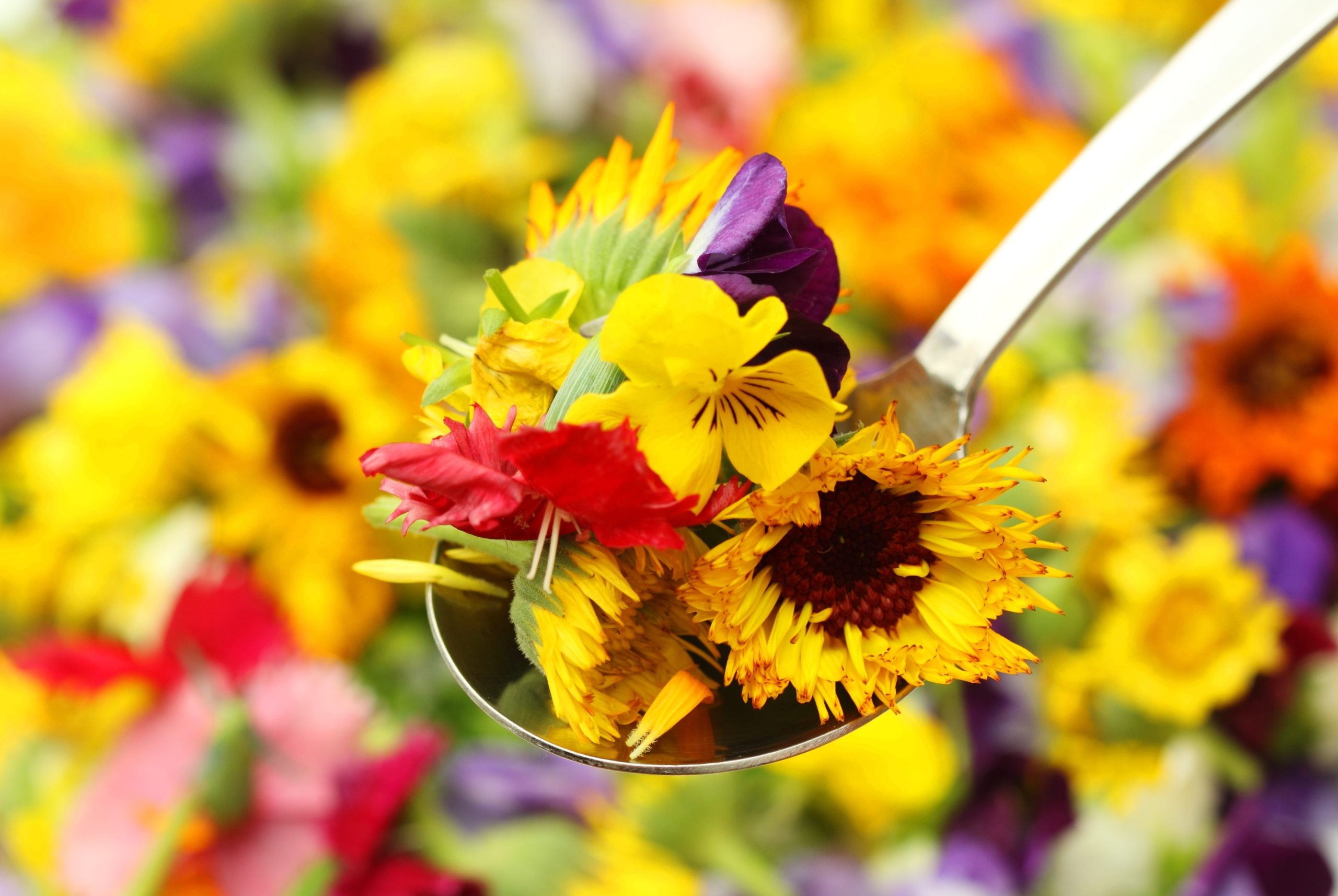Top Edible Flowers for Home Gardens

Top Edible Flowers for Home Gardens
Growing edible flowers in your home garden is a delightful way to add a pop of color to your meals and impress your guests. Not only do these culinary flowers look stunning, but they also offer unique flavors and nutritional benefits. Let's dive into the world of garden-to-table dining and explore the best edible flowers to plant in home gardens.
Why Grow Edible Flowers?
Imagine transforming your ordinary salad into a gourmet masterpiece with a sprinkle of vibrant petals. Homegrown flowers can turn any dish into a work of art, making your meals as visually appealing as they are delicious. Plus, flower gardening is a fun and rewarding hobby that can bring a sense of accomplishment and joy.
Best Edible Flowers for Your Garden
Nasturtiums
Nasturtiums are a must-have in any edible plants garden. These bright, peppery flowers come in a variety of colors and are perfect for adding a spicy kick to salads and sandwiches. They're also known for their beautiful lily pad-like leaves, which are edible too!
Calendula
Calendula, also known as pot marigold, is a versatile culinary flower. Its petals have a tangy, slightly bitter flavor and can be used in salads, teas, or even as a natural food dye. Calendula is also prized for its medicinal properties, making it a valuable addition to your garden.
Borage
Borage is a stunning blue star-shaped flower that tastes like cucumber. It's a fantastic garnish for summer drinks and salads. Plus, borage is a bee magnet, so it's great for pollinators and your garden's ecosystem.
Chive Blossoms
Chive blossoms are a delightful purple pom-pom that packs a mild onion flavor. They're perfect for sprinkling on salads, soups, or even using as a garnish for deviled eggs. Plus, they're easy to grow and look beautiful in any garden.
Pansies and Violas
Pansies and violas are charming, colorful flowers that have a mild, slightly sweet flavor. They're perfect for decorating cakes, salads, or even freezing into ice cubes for a stunning summer drink.
Lavender
Lavender is a fragrant herb with beautiful purple flowers that have a sweet, floral flavor. It's fantastic for infusing into teas, syrups, or even ice cream. Plus, lavender is a bee-friendly plant, so it's great for your garden's biodiversity.
Dandelions
Dandelions are often considered weeds, but they're actually a nutritious edible plant. Their young leaves and flowers are great in salads, and you can even make dandelion wine or tea. Just make sure to pick them from a pesticide-free area.
Hibiscus
Hibiscus flowers are large, showy blooms that have a tart, cranberry-like flavor. They're perfect for making teas, syrups, or even jam. Plus, hibiscus is rich in vitamin C and antioxidants.
Growing Tips for Edible Flowers
Choose the Right Location
Most edible flowers prefer a sunny spot with well-draining soil. Make sure to choose a location that gets at least 6 hours of sunlight a day.
Start with Seeds or Seedlings
You can start your homegrown flowers from seeds or buy seedlings from a nursery. Some flowers, like nasturtiums, are easy to grow from seed, while others, like lavender, may be easier to start with a seedling.
Water and Care
Water your flowers regularly, making sure the soil stays moist but not waterlogged. Deadhead spent blooms to encourage more flowers and keep your plants looking tidy.
Harvesting Edible Flowers
The best time to harvest culinary flowers is in the morning when they're at their freshest. Make sure to choose flowers that are fully open and free from pests or disease.
Safety Tips for Edible Flowers
Not All Flowers are Edible
Some flowers are poisonous, so it's essential to do your research before eating any flower. If you're unsure, it's best to leave it out of your meal.
Avoid Pesticides
Make sure to grow your edible plants in a pesticide-free environment. Flowers can absorb chemicals, so it's important to keep them safe from harmful substances.
Introduce Flowers Gradually
Even edible flowers can cause allergic reactions in some people. It's a good idea to introduce them gradually into your diet and watch for any adverse reactions.
Inspiration for Cooking with Edible Flowers
From salads to desserts, there are countless ways to incorporate edible flowers into your meals. For a comprehensive list of the best edible flowers to grow, check out this guide from Gardeners' World.
Conclusion
Growing edible flowers in your home garden is a rewarding and delicious hobby. From nasturtiums to lavender, there's a world of culinary flowers waiting to be explored. So, why not start your garden-to-table journey today and transform your meals into stunning, flavorful creations?
FAQs
Q: Which edible flowers are easiest to grow?
A: Nasturtiums, calendula, and borage are some of the easiest edible flowers to grow. They're hardy, require minimal care, and produce abundant blooms.
Q: Can I eat the flowers from my local florist?
A: It's not recommended to eat flowers from a florist as they may have been treated with pesticides or other chemicals. Stick to homegrown flowers or those from a trusted organic source.
Q: How do I store edible flowers?
A: Edible flowers are best used fresh but can be stored in the refrigerator for up to a week. Place them gently on a damp paper towel in an airtight container.
Q: Can I freeze edible flowers?
A: Yes, you can freeze edible flowers in ice cubes for a beautiful addition to summer drinks. However, keep in mind that freezing may cause them to lose some of their texture and flavor.
Q: Are there any health benefits to eating edible flowers?
A: Many edible flowers are rich in vitamins, minerals, and antioxidants. Some, like dandelions and hibiscus, have been used for their medicinal properties for centuries. However, more research is needed to fully understand their health benefits.
0 Response to " Top Edible Flowers for Home Gardens"
Post a Comment